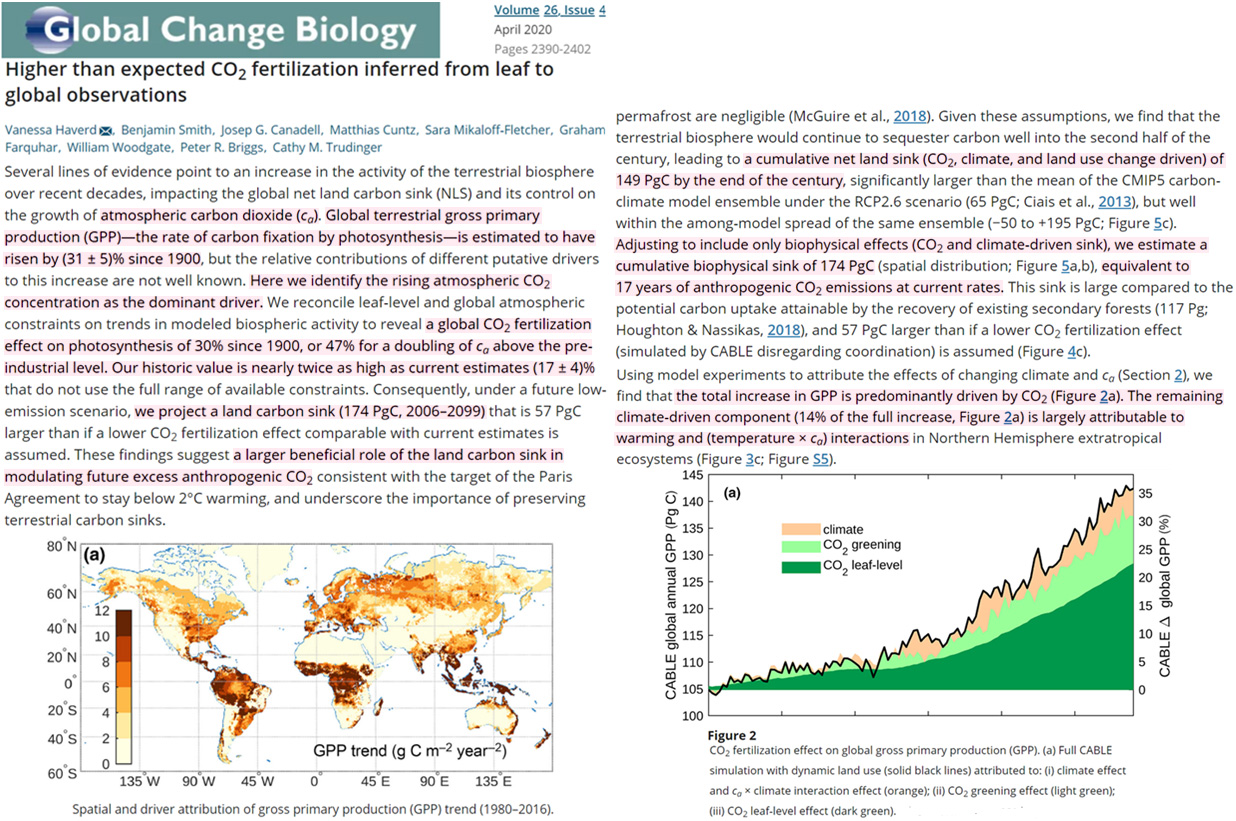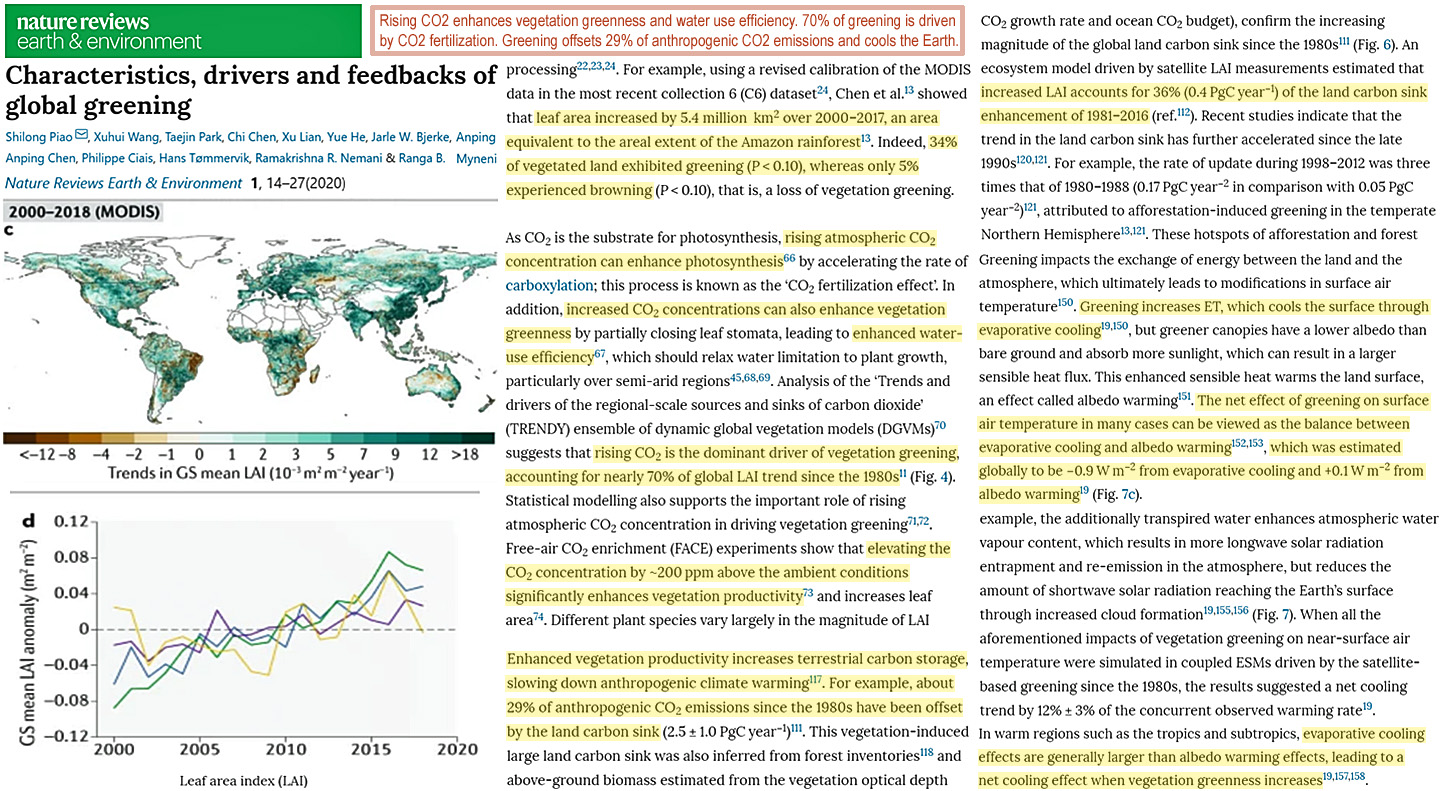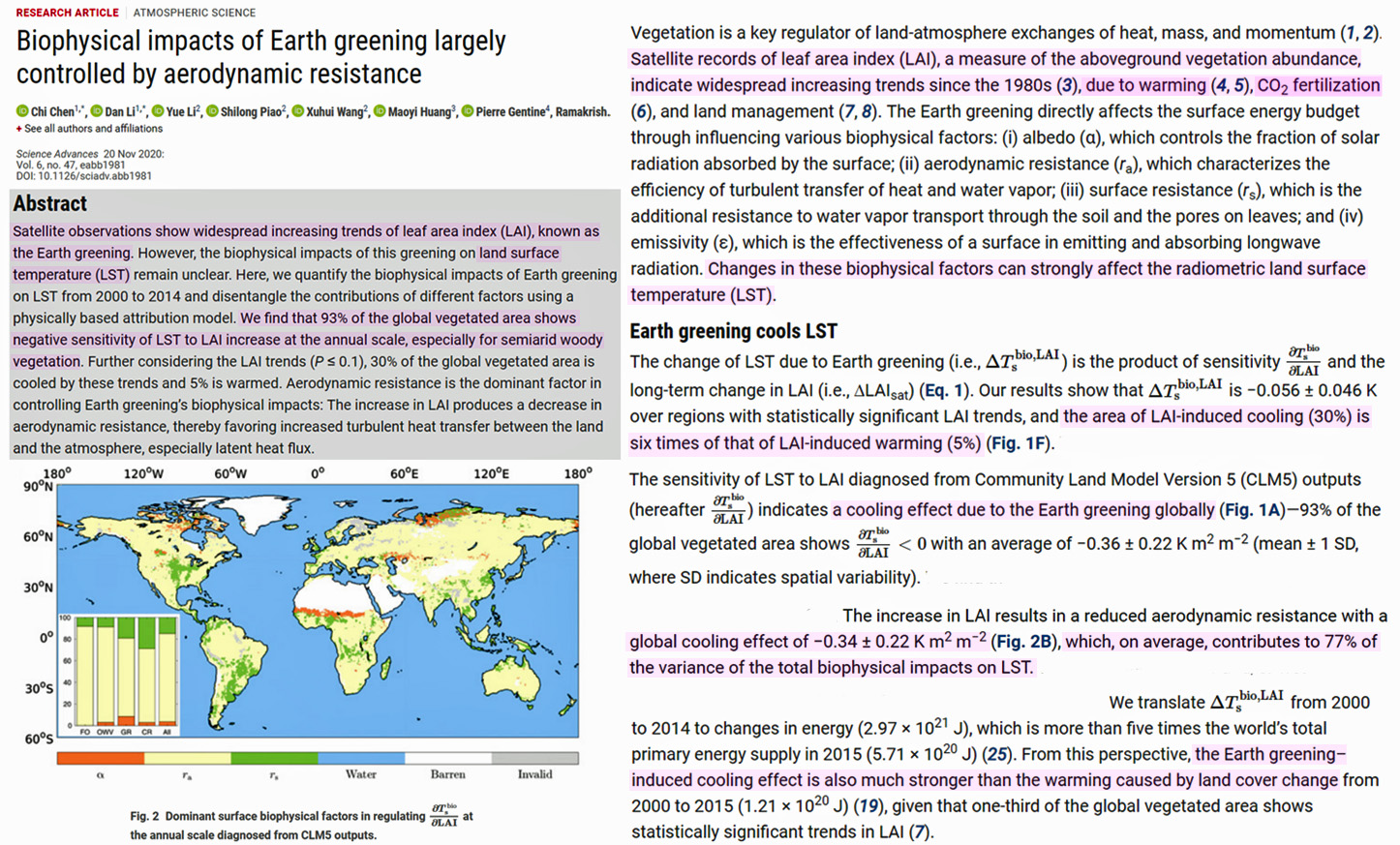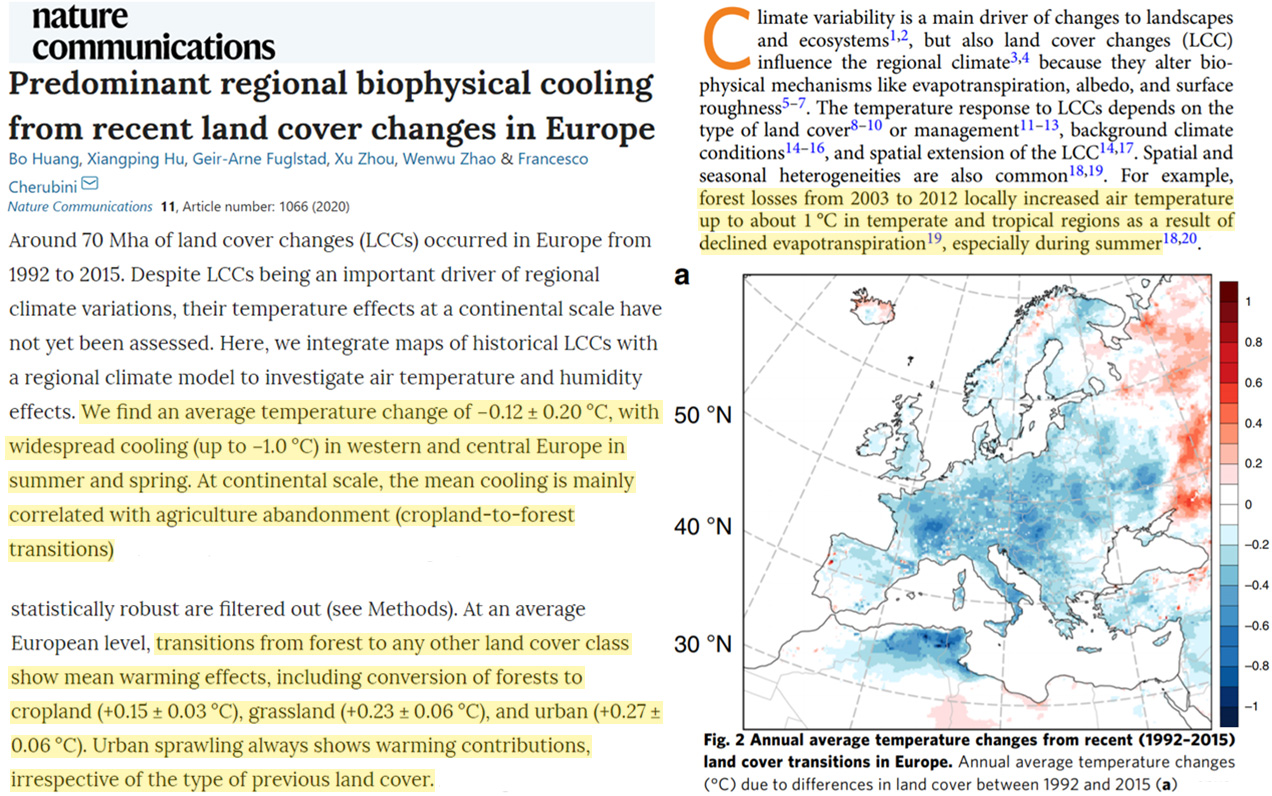Greening Shock and Awe…Published Study: POST-2000 VEGETATIVE GLOBAL GREENING EXPANDS BY 90,000 MANHATTANS!! …Warming And CO2-Induced Greening Leads To COOLING. https://t.co/3q0OnEboz6 pic.twitter.com/AIUCnp90SN
— Pierre L. Gosselin (@NoTricksZone) January 21, 2021
By Kenneth Richard
Since the 1980s, warming and rising CO2 fertilization have spawned a global-scale greening trend. This leads to an “Earth greening-induced cooling effect” of land surface temperatures.
In the last 9 months we have highlighted a study (Haverd et al., 2020) asserting rising CO2 and warming are the dominant drivers of Earth’s strong post-1980s greening trend. This greening expands Earth’s carbon sink so profoundly that by 2100 the greening of the Earth will offset 17 years (equivalent) of anthropogenic CO2 emissions.

Image Source: Haverd et al., 2020
In August we featured another study, Piao et al., 2020, that expands upon these same principles, further suggesting the net effect of more CO2-driven greening is more cooling and carbon sink expansion.
Since the 1980s, 29% of human CO2 emissions were cancelled out by the CO2-induced greening of the Earth. The post-2000 vegetative greening expansion has been so massive (5.4 million km²) its net areal increase is equivalent to a region the size of the Amazon rainforest.

Image Source: Piao et al., 2020
In late November (2020) another study (Chen et al., 2020) was published that highlighted the “widespread increasing trends” in greening/Leaf Area Index (LAI) since the 1980s that is “due to warming…CO2 fertilization” and land management.
The authors strongly supported the “Earth greening cools LST [land surface temperatures]” conclusions that others have emphasized, noting that “the area of LAI-induced cooling (30%) is six times that of LAI-induced warming (5%).”

Image Source: Chen et al., 2020
Finally, a visual representation affirming the strong cooling effects of greening/reforestation was published in another 2020 study.
Huang et al. (2020) found an astonishing -0.12°C per year (-1.2°C per decade!) cooling trend associated with recent (1992-2015) land cover changes (LLCs) across Europe – a region where croplands are increasingly being converted to forests.
“At an average European level, transitions from forest to any other land cover class show mean warming effects, including conversion of forests to cropland (+0.15 ± 0.03 °C), grassland (+0.23 ± 0.06 °C), and urban (+0.27 ± 0.06 °C). Urban sprawling always shows warming contributions, irrespective of the type of previous land cover.”

Image Source: Huang et al., 2020
Want to warm local and regional land surface temperatures? Cut down forests and build up urban areas.
Want to cool local and regional land surface temperatures? Plant trees and return croplands to forest areas.
The latter option would appear to be far more effective and less costly than trying to mitigate CO2 emissions as our simultaneous demand for energy rapidly expands across the global landscape.



